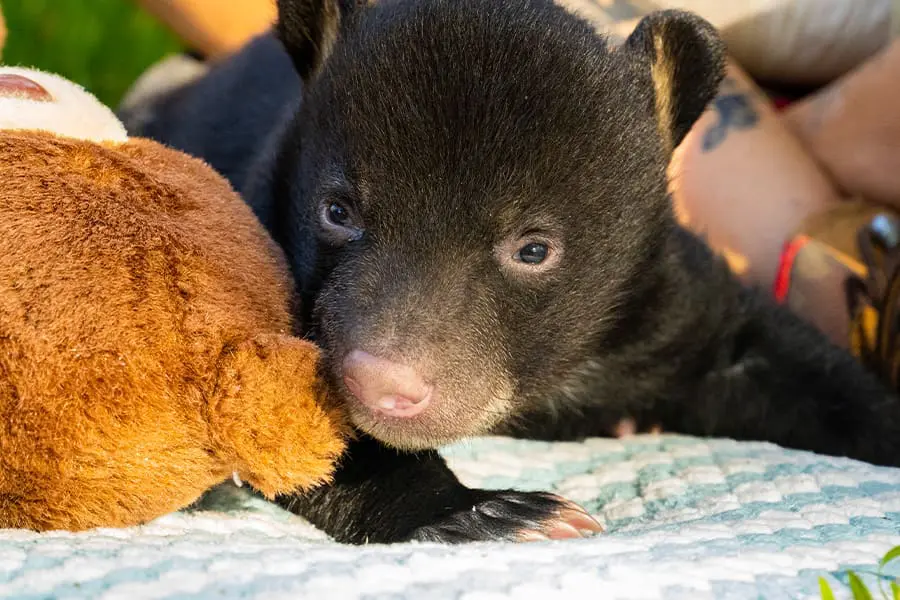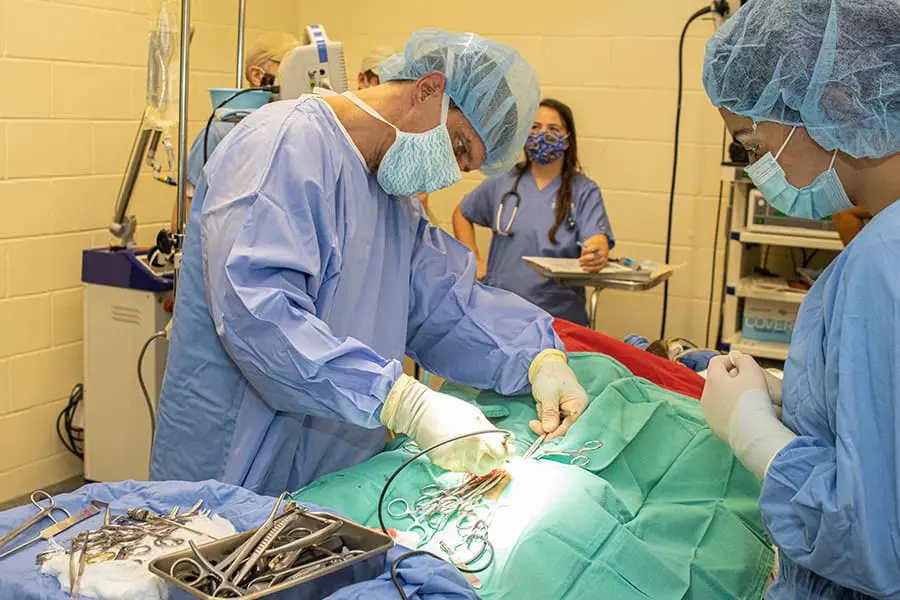

Brody in March 2020.
On February 21, 2020, a hiker in Ocala National Forest came across something truly remarkable: a tiny bear cub, alone and lethargic on a cold dirt road.
The hiker notified Florida Fish and Wildlife Conservation Commission (FWC), who scoured the area for the cub’s mother. Unable to find her, and with temperatures forecast to drop into the thirties that night, FWC officials scooped up the cub and placed him in a warm incubator.
They laid out a blanket with the cub’s scent and set up a surveillance camera to monitor the area where the cub was discovered. Still, no adult female bear was found.
FWC cared for the cub for several days, bottle-feeding him every few hours around the clock. He was suffering through an “uncoordinated suck” and severe respiratory problems.
Because of these health issues and his extremely young age at abandonment, FWC deemed the cub—who would later be named Brody—non-releasable and transferred him to the Zoo for long-term care.
“Brody was in extremely rough shape when he arrived,” said Dr. Trevor Zachariah, the Zoo’s director of veterinary programs. “He was having coughing fits and lots of nasal discharge, and getting him to feed was a constant challenge. We weren’t sure if he was going to make it.”
Brody ultimately pulled through and recovered from his respiratory illness thanks to intensive veterinary attention. Curator of animals Lauren Hinson (who previously hand-raised kangaroos and a sloth at the Zoo) became Brody’s primary caretaker and worked with him to develop his suckling abilities.
As Brody began to thrive, the world at large was being enveloped by the COVID-19 pandemic. The Zoo closed to the public on March 18—at the height of its busiest season of the year—and financial uncertainties cast a dark shadow over every department.
“We knew from the get-go that while we would have to cut a lot of expenses and programs, we weren’t going to compromise on animal wellness,” said Michelle Smurl, the Zoo’s director of animal programs. “Our community stepped up in a huge way, and it was because of this generosity that we were able to continue caring for Brody and the rest of our residents.”
A total of 4,250 people from Brevard County and around the world donated to the Zoo in 2020, with 1,684 of those individuals donating to the Zoo for the very first time.
In the spring, Brody’s caretakers observed him obsessively licking his underside. He was diagnosed with a condition similar to hip dysplasia and underwent a first-of-its-kind surgical procedure to correct this issue. Brody recovered from the surgery without complication and continued to thrive.

Brody undergoes an innovative procedure.
A few months later, Brody was large enough to share space with adult female bear Cheyenne for the first time. Though we were initially unsure what to expect, the bears hit it off immediately. These “play sessions” were short in duration to keep Brody from overexerting himself.
Brody did well with Cheyenne until mid-December, when he began exhibiting lameness in his hindlegs. Diagnostic radiographs and blood tests were inconclusive, and keepers suspended the play sessions until Brody recovered.
The bears were reintroduced on January 10. They continued to engage in positive play behavior, and Brody seemed to be functioning well.
In early February, however, Brody’s condition regressed again. He was given a CT scan, which did not reveal any issues that would cause the lameness he was presenting; in fact, his hips looked better than ever before, meaning last year’s surgery was a success.
“We think Brody’s lameness may be caused by a neurological issue,” said Zachariah. “Our next steps are to get him an MRI so we can look at his soft tissues and perform a spinal tap to collect fluid for testing.”
For now, Brody is staying behind the scenes and receiving plenty of special attention from his keepers.
“Caring for Brody is going to be a constant struggle,” said Smurl, “but he’s worth every bit of effort.”
